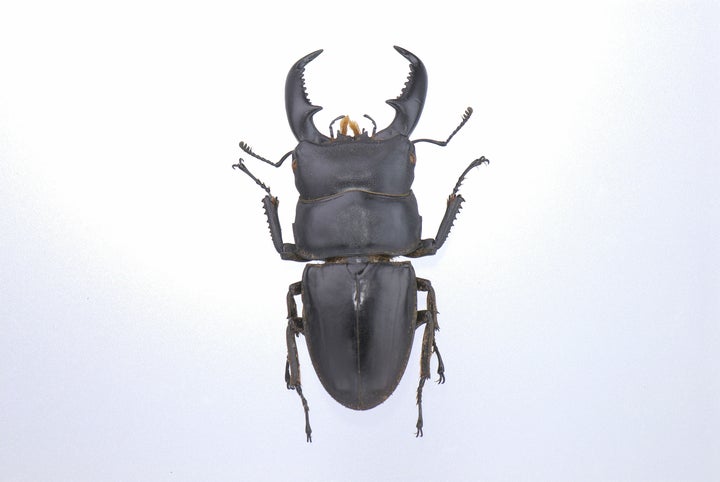
One of the more curious things to come out of the Swedish celebrations of Tomas Tranströmer's Nobel Prize in Literature was a temporary exhibit at the Museum of Natural History, of Tranströmer's boyhood insect collection.
A little book was also published, in a limited edition, about the collection: Fredrik Sjöberg, an entomologist, describes in six beautiful and pedantic essays young Tranströmer's forays over Runmarö island in the Stockholm archipelago, in search of the small and rare.
The essays are preceded by a citation by Charles Darwin: "It seems therefore that a taste for collecting beetles is some indication for future success in life."
There's truth in that, when it comes to Tranströmer. Something must have begun with the child's observations of mysterious insect life, in the recording of those minute things. What is wonderful about Tranströmer's poetry is similar to what is wonderful about the beetle: its clear black outline against the forest floor, the slow crawl -- and then its sudden transformation into a quick, light, flying thing. The hard shell of the exoskeleton parting to reveal a set of frail, translucent wings.
There is something of the beetle's quick gesture in, for example, the poem Vermeer from 1989: "... An unknown blue material is nailed to the chairs. / The gold studs flew in with incredible speed / and stopped abruptly / as if they had never been other than stillness." I think it is this that has kept me coming back Tranströmer's poetry: his ability to give everyday objects a rare charge -- an inherent energy, an insect's about-to-fly-ness.
Because Tranströmer's world is a strikingly concrete one, inhabited by cars and telephones and silverware. It is also constantly shifting: these objects have the potential to at any time topple into metamorphosis.
Tranströmer's poems exist in a space between sleep and waking, always on the brink of another kind of consciousness. Waking is "a parachute jump from dreams": perilous, nauseating, a shift in perspective that will bring yet another transformation. A sheet of music is a centipede (in Shubertiana); a beached tugboat an extinguished lamp (Sketch in October), the sound of grass growing is like a million tiny gaslights (Baltics IV). Each new image is a revelation, written by a poet with a uncanny understanding of the human mind.
I missed that exhibition at the Museum of Natural History, but I think I prefer imagining it, anyway: the rows of still beetles, the meticulous labels. The papery wings. The thin silver pins. I don't think that this ordered and catalogued universe, prepared by Tranströmer, the entomologist, is a strange beginnings for Tranströmer, the poet.
What Tranströmer says of his days collecting beetles, in his autobiographical Memories Look at Me (1993), might just as well have been said of his poetry:
"I moved in the great mystery. I learned that the ground was alive, that there was an infinite world of creeping and flying things living their own rich life without paying the least regard to us. I caught a fraction of a fraction of that world and pinned it down in my boxes... they're sitting there, those insects. As if biding their time."
Note: all citations are taken from Robin Fulton's excellent translations in The Great Enigma. New collected poems (New Directions, 2006)